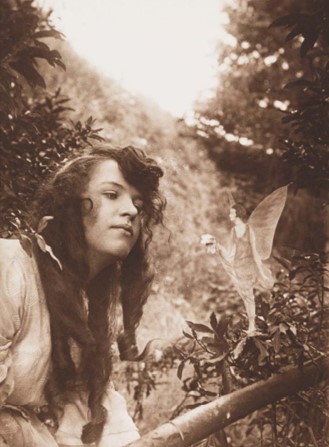
Slow Film
Something rather wonderful and definitely unique in the world of television is going on at the moment. Channel Editor for BBC4 Cassian Harrison may be strapped for cash which could be the main reason why he has commissioned a season of minimalist television programmes in the visually equivalent spirit of the likes of Philip Glass, Steve Reich, Nick Cage and others. Be that as it may, the BBC is broadcasting some inspirational and beautiful films that unfold, if not mostly in real time, then almost.
This Slow Season kicked off with the three-hour, acutely observed and insightful latest work of the acclaimed documentarist American Frederick Wiseman about the National gallery. It is a compelling and engrossing observation; a film without commentary – something that is repeated throughout the BBC4 season, and as powerful an argument as I have seen for a while for the image and the soundtrack to do the work, rather than inane and dumb commentary which is the meat and two veg of television. Wiseman is a most uncompromising filmmaker in the true American documentary tradition who has focused on filming inside institutions. He was a guest at last year’s Zurich Film Festival. There is a good account of a masterclass he attended here
At a time when the world of social media is trumpeting the wonders of the seven second short, an homage if ever there was one to the continuing evolution of the dwindling attention span of modern Man, it is refreshing and rewarding to sit in front of the telly and, for once, simply watch and listen. My favourite in the season so far is a thirty-minute film in real time of a glass-blower making a jug. Beautifully shot and observed with a most creative use of the ‘cutaway,’ a much abused editing convention, with an elegant ambient soundtrack, the film is as much a work of art as the glass jug that we watch being created. Every aspect of the film is as beautifully crafted.
When I settled down to watch a two-hour film of a journey along the Kennet and Avon canal filmed from a single camera on the bow of a barge and in real time I thought it would be a tough watch. But it wasn’t. On the contrary, it was utterly engrossing and absorbing. My eyes were able to roam across the screen to see every nuance; to enjoy the effect of wind on water, the changing light as clouds scudded across the sun; the speeding cyclists on the tow path. Above all, the soundtrack, with its background mantra of a gently throbbing engine, the equally ever-changing audio landscape of birdsong, rippling water and wind in the trees served to emphasis so much of what we miss in the mass media today; namely, that the moving image can and should be contemplative.
In a sense, to watch this season of films is to go on a media retreat. It’s therapy and I urge anyone who hasn’t yet found the series to visit it on the BBC iplayer. I ask only this of you. Don’t be tempted to fast forward. Settle down, switch off other appliances and remove all distractions. This season may never be repeated. It was cheap as chips to make so let’s hope financial imperatives continue to be the spur for creative enlightenment.






This is television at its best. The glass blowing and the knife making documentaries contain some of the best photography I have ever seen on the television. As you say it is therapy, enabling the viewer to become deeply involved with the images, mostly being a series of still images with a rich well controlled palette and gorgeous bokeh. Inspirational.
I’ve seen the Wiseman National Gallery film and the Kennet and Avon – adding up to a (very worthwhile!) five hour investment. The canal film is like an open-eyed, visual equivalent of putting on a relaxing CD and sitting back (eyes closed); or a two hour walk in your armchair – very different from anything I can recall seeing before.
I loved the National Gallery film – the way it carefully built to a picture of world class expertise combined with frankly stunningly inefficient and prejudiced senior management without a single word of editorialising left me awestruck.
I am afraid I didn’t get past 30 minutes on the canal. I was put off by the drone footage at the start and when the educational messages started appearing on the walls and barges it started to feel like I was being lectured to.
In the same vein as the National Gallery film but with a completely different subject matter is the 2014 documentary Maidan. Long static shots, no commentary, no music, no headliners, just a gradual unfolding. It makes you realise how little we understand from watching the news of what tumultuous events feel like to those involved.
I haven’t watch this one, but will do soon. I did watch the other night the one about the canal, which I cannot remember, and it was fascinating. My husband thought to be the best film he’s ever watched, and I agree.
The glass blower was hypnotic; enhanced by the desire to finally discover what was being made.
The film enshrined some photographic values which are today perhaps rather under employed or even not appreciated and for me there was an element of potter’s wheel nostalgia that connected one to the values of that time and its ethos.
Other ideas… catching sight of the bald title had me first thinking 32ASA and then the efficacy of film being slow to work with.
I too thought about the Potter’s wheel and also the Monte Carlo rally, but then thought that those films were ‘fillers’, whereas these ‘slow’ films were deliberate stories/commentaries and documentaries – a media retreat, here’s an interesting article in today’s guardian on a related subject http://www.theguardian.com/media/2015/may/07/how-friendship-became-tool-of-powerful?fb_ref=Default .
What did we think about the depiction/role of gender in the films though? Maybe there’ll be some more in the series….
Just watched the Glass episode – stunning bit of work so nice to see this rather than a heavily, and often clumsily edited, piece that you often get. I don’t know about the rest of you but I kept thinking all along that “this would be a great still shot” “that would be a great still shot”. As Nigel said shot with a real photographic eye. Thanks for sharing. I’ve just got to allocate some time for the others now.
For those who enjoyed the slow season (I want more of this, but I am of the school of W H Davies!) can I recommend the work of William Raban (http://shop.bfi.org.uk/william-raban-british-artists-films-dvd-bluray.html#.VUs8BWbGPfI)…the Thames Film is not devoid of commentary exactly but enhanced by it in the way that the captions work in the canal film.
I loved these too. Beautiful to watch, and as a musician myself, I particularly enjoyed the lack of background music. I strongly dislike the way music is abused these days in film-making, even in documentaries, as if the viewer cannot possibly be allowed to hear silence, in case their attention would wander away. On the contrary, the often silent soundtrack composed of natural ambient sounds really drew me in.
I do hope to hear more of these.
I tend to agree but perhaps it depends on your definition of ‘music’…c.f. Luc Ferrari ‘Presque Rien’ (https://www.youtube.com/watch?v=aKq-LRYv1Q4) in this case the images would get in the way!
Thanks for the link, it’s nice that there is more on youtube than cat videos.
Really I was referring to the way that music is plastered like wallpaper over so much film, I suppose because it is easy to do. I am all for the intelligent use of sounds whether naturally occurring or composed, instrumental or ambient. It just doesn’t happen very often. It is very much in evidence when you listen to old tv and film, by which I mean about pre-1980, just how much less music was used, and how much more effective that made it. An example was Smiley’s People, which was repeated recently on the BBC, and which remains a brilliant piece of TV.
I’m with you all the way there Fiona
My favourite soundtrack from that era is Clapton/Kamen’s Edge of Darkness and also a cracking piece of drama.
I agree. It is a constant puzzle in my head why sport needs music played over the film. Especially in something like vintage car racing where the natural sounds are as important as the images.
I often think it is because you can…no more…no less
Yes, you are right. Exercising control, not to be under rated.